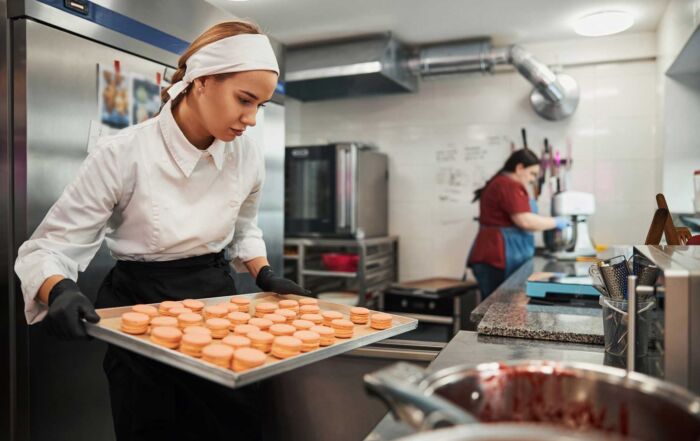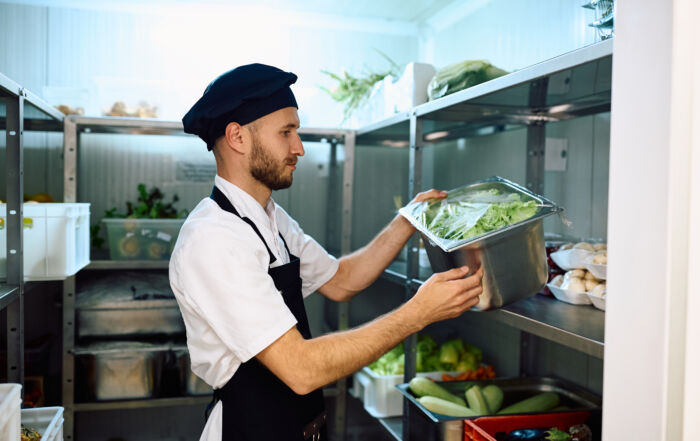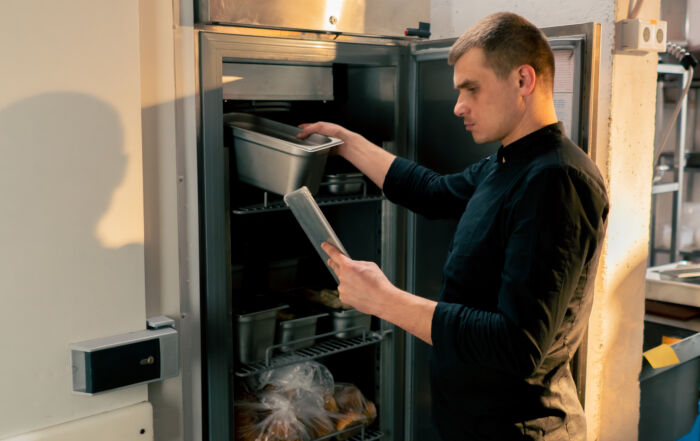Flour Safety: Don’t Let E. coli become the Secret Ingredient in your Cake.
Earlier this month, we started to see information coming out about a foodborne illness outbreak from an unlikely source – flour. As of early-April, 12 people had fallen ill, and three people had been hospitalized as a result of flour contaminated with Salmonella. While the outbreak is still in its early stages, no individuals have died because of their illness. A specific source has not yet been identified in the outbreak, but all who have fallen ill have reported eating raw batter or dough due before developing symptoms – and flour has been identified as the only common ingredient in these batters and doughs.
Perhaps this isn’t a surprise if you pay attention to outbreaks and the foods implicated in those outbreaks. But for some of you it may come as a surprise. Who among us didn’t grow up begging mom for some cookie dough as she was making chocolate chip cookies?
Consuming raw cookie dough (or any dough or batter) has always been risky. I remember my mother warning my brother, sister, and I about the raw egg in the product. But, more and more, we are seeing evidence that consuming raw dough of any sort may very well be a terrible idea – especially for young children. While raw eggs are still a concern, the raw flour used in these products has become almost as problematic. Both E. Coli and Salmonella have been implicated in recent flour outbreaks. Between 2017 and 2022, there were appropriately 22 recalls involving flour.
… recent outbreaks help illustrate the reason why flour should be treated just as we would treat any potentially hazardous food product in our kitchens.
Contrary to the belief of many, raw flour is not a ready to eat food. In fact, Consumer Reports recently noted that flour was among the top 10 risky recalled foods. These recent outbreaks help illustrate the reason why flour should be treated just as we would treat any potentially hazardous food product in our kitchens.
I have received questions over the last several years about the causes of the flour outbreaks. Sure, most who have reached out know that E. Coli or Salmonella is the agent that caused the outbreak, but how did the flour become contaminated with these bacteria? While it is incredibly hard to say the exact method by which the flour was contaminated, it most likely occurred in the field. While most farmers make use of the best methods available to follow Good Agricultural Practices, it is always possible that wheat in the field could become contaminated when it comes into contact with animal feces, contaminated irrigation water, or run off from near-by pastures and fields. Once contaminated, the processing of flour does not normally include a pathogen reduction step, such as heat treating, to kill the bacteria so it is easy to see how the contaminated flour may find its way into your kitchen.
So, what can you do to protect your guests and your business? Treat flour like it is potentially hazard food because it really is! If you run a bakery or make bakery products in your operation, be sure to sanitize the work surfaces before and after using it. Eliminate cross contamination just as you would do with a meat or poultry product. Don’t allow employees to eat raw dough or batters, and make sure you don’t have any recipes (such as truffles, icing, or cookies) which involve flour but no kill step before serving. Last, don’t serve raw cookie dough in ice creams or other desserts without making sure that the product is an edible cookie dough made with heat-treated flour and pasteurized or no eggs. Risk Nothing.
READ MORE POSTS
Beyond Simple Compliance: Nurturing a Food Safety Culture in Your Team
In writing my last blog post, I was torn on addressing the issue of getting [...]
Crafting Effective SOPs to Serve as your Food Safety Foundation
As I was writing my last blog, I realized I referenced standard operating procedures (SOPs), [...]
Reducing Waste, Raising Safety: Smart Strategies for Managing Food Waste
In the face of increasing food prices and an ever-increasing demand for foodservice operations to [...]
Cooling Food in Your Operation: Best Practices
Earlier in the month, I talked a bit about safely thawing food and, in my [...]










